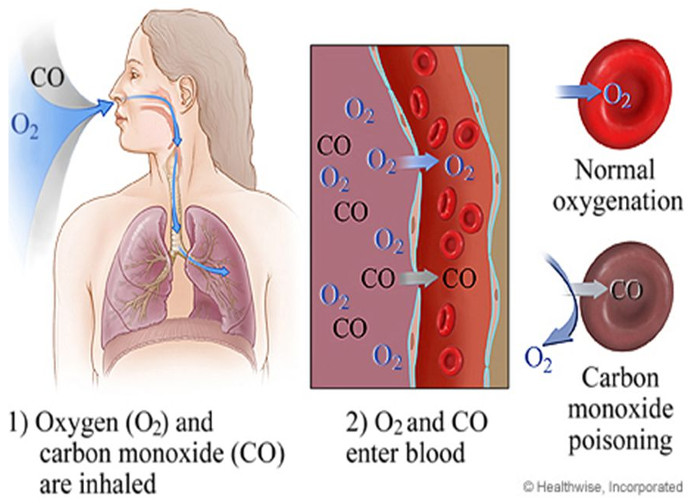No one would have expected that this colorless, odorless gas could take people down so quickly!
The temperature suddenly drops, many families buy a heater or use a two-way air conditioner to warm up. However, not everyone has the conditions to equip themselves, especially the inhabitants of high mountain areas with an underdeveloped economy. Hot coals are one way to help them withstand the elements. Every year there are deaths or gas poisoning from burning coal in closed rooms.
Dr Le Hoan, deputy head of the respiratory endocrinology department at Hanoi University Medical Hospital, said that burning honeycombs, charcoal for heating in the absence of air, CO2 and CO, are two unnecessary gases for the body. Wherein, CO is an extremely poisonous, colorless, odorless gas so many people do not know, gradually have difficulty breathing and then pass out or lose consciousness while sleeping. The victim who inhaled CO will often suffer brain and heart damage, mildly suffering from respiratory illnesses such as asthma, bronchitis, pneumonia and, worse yet, death.
The question is: is burning coal gas potentially fatal?
Sorry, the answer is yes. Be aware that burning charcoal in the absence of air will produce a very toxic gas, carbon monoxide (CO).
The victim, by inhaling this gas strongly, will die, and if it is milder, it leaves neurological – mental consequences.
How Does CO (Carbon Monoxide) Kill People?
To be clear, carbon monoxide (CO) is a colorless, odorless gas that comes from fuels like charcoal, propane, methane, or half-burnt oil (incomplete combustion).

When the body inhales this gas, it enters the lungs and then the blood, where the CO combines with hemoglobin (red blood cells) in the blood to form carboxy hemoglobin (HbCO).
This substance blocks the release of oxygen in cells, reduces the ability of the blood to carry oxygen, resulting in a lack of oxygen.
When the pigment in red blood cells lacks oxygen, the body lacks oxygen as well. In addition, CO can also combine with myoglobin (muscle pigment), damaging cells and generating an acidic metabolic environment.
Since it is a colorless, odorless and non-irritating gas, it is difficult for the victim to feel the presence of CO in the air.
It is only when the victim begins to feel “abnormal” that the limb stops moving, loses consciousness and leads to death. This is because CO enters the body slowly, causing a decrease in oxygen in the blood, in all organs.
The organ that needs more oxygen like the brain, the heart … the more dangerous it is.
Symptoms of CO poisoning
Symptoms of CO poisoning usually begin with headache, nausea, dizziness, difficulty breathing, and then slowly enter a coma.
At more severe levels, the victim will experience chest tightness, blurred vision, difficulty breathing, rapid pulse … the lungs seem stuffy, no longer functioning.
At this point, the victim may have a seizure, pass out, permanently damage the brain, stop beating, and die.
What to do when a victim suffers from CO?
If you suspect that a person has been exposed to CO poisoning, you must immediately remove the sick person from the area or open all doors to allow air to enter the house – by all means prevent it. patient to access CO.
If the patient is slightly ill, he will recover quickly, wake up again. However, in more severe cases, it is necessary to perform CPR and quickly bring the patient to the emergency room.
Victims should also seek additional assistance, in case of contact with poisonous gas.
Heating with coal is even more dangerous in the elderly and young children, those with a weak respiratory system, low resistance. Putting charcoal in your home or boiler room can also cause a fire or severe burns. Therefore, people should limit the burning of charcoal, especially families with newborn women and young children.
With frequent use of charcoal stoves for cooking, the kitchen should be placed in a well ventilated place. Do not place a charcoal oven in a room, in an airtight place. Don’t burn overnight. Equipped with heat lamps, two-way air conditioning to increase the temperature in the room. Keep the room temperature 25 to 28 degrees C, ventilated but avoid drafts. Not leaving the room temperature too hot can cause burns in babies or heat shock when going out in the cold, increasing the risk of numbness, difficulty in blood circulation, or even hypothermia, stroke.


